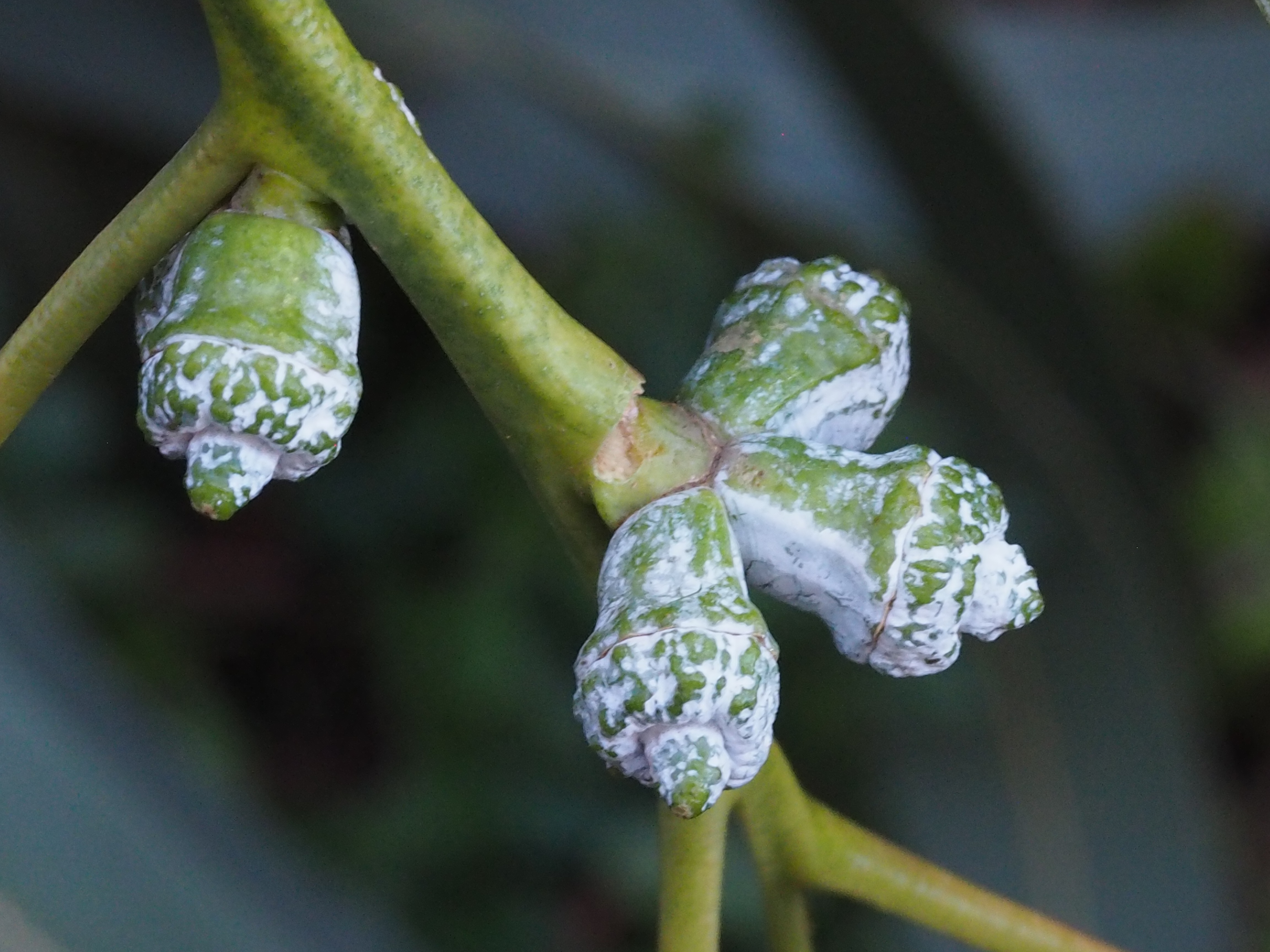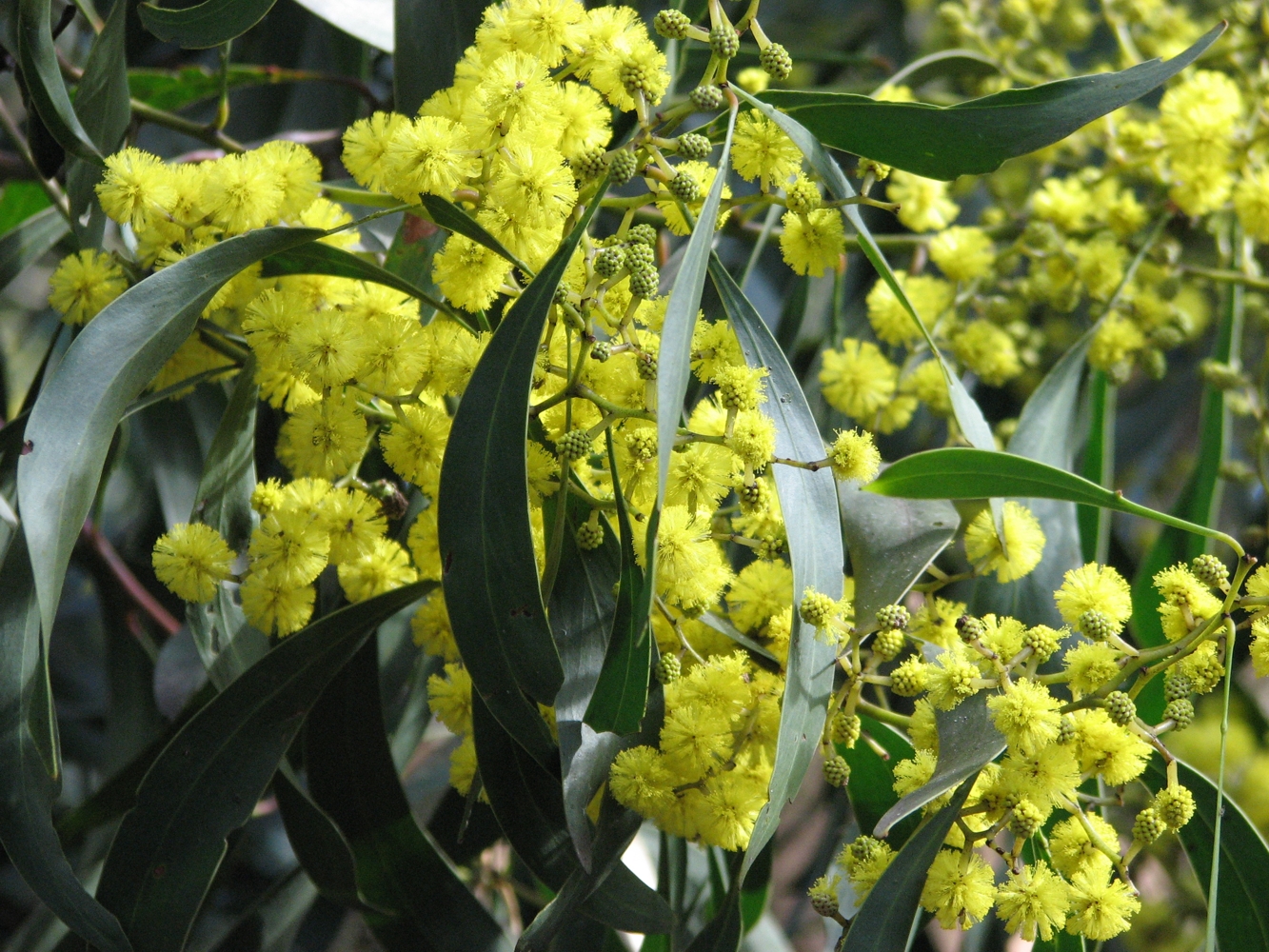|
Eucalyptus Globulus
''Eucalyptus globulus'', commonly known as southern blue gum or blue gum, is a species of tall, evergreen tree endemic to southeastern Australia. This ''Eucalyptus'' species has mostly smooth bark, juvenile leaves that are whitish and waxy on the lower surface, glossy green, lance-shaped adult leaves, glaucous, ribbed flower buds arranged singly or in groups of three or seven in leaf axils, white flowers and woody fruit. There are four subspecies, each with a different distribution across Australia, occurring in New South Wales, Victoria and Tasmania. The subspecies are the Victorian blue gum, Tasmanian blue gum, Maiden's gum, and Victorian eurabbie. Description ''Eucalyptus globulus'' is a tree that typically grows to a height of but may sometimes only be a stunted shrub, or alternatively under ideal conditions can grow as tall as , and forms a lignotuber. The bark is usually smooth, white to cream-coloured but there are sometimes slabs of persistent, unshed bark at the ... [...More Info...] [...Related Items...] OR: [Wikipedia] [Google] [Baidu] |
Jacques Labillardière
Jacques-Julien Houtou de Labillardière (28 October 1755 – 8 January 1834) was a French biologist noted for his descriptions of the flora of Australia. Labillardière was a member of a voyage in search of the La Pérouse expedition. He published a popular account of his journey and produced the first Flora on the region. Early life Jacques Labillardière was born in Alençon, Normandy, France, on 28 October 1755. The ninth of 14 children of a lace merchant, he was born into a devoutly Roman Catholic family of modest means.Duyker (2003) p. 8. The surname ''Labillardière'' originated with Labillardière's grandfather, Jacques Houtou, who, in an affectation of nobility, appended the name of the family's estate, ''La Billardière'', after his surname. Labillardière was thus baptised under the surname ''Houtou de Labillardière'', but he later dropped the patronymic, retaining only ''Labillardière'' in both his publications and his signature. As a child, he attended the Co ... [...More Info...] [...Related Items...] OR: [Wikipedia] [Google] [Baidu] |
Petiole (botany)
In botany, the petiole () is the stalk that attaches the leaf blade to the stem, and is able to twist the leaf to face the sun. This gives a characteristic foliage arrangement to the plant. Outgrowths appearing on each side of the petiole in some species are called stipules. Leaves with a petiole are said to be petiolate, while leaves lacking a petiole are called sessile or apetiolate. Description The petiole is a stalk that attaches a leaf to the plant stem. In petiolate leaves, the leaf stalk may be long, as in the leaves of celery and rhubarb, or short. When completely absent, the blade attaches directly to the stem and is said to be sessile. Subpetiolate leaves have an extremely short petiole, and may appear sessile. The broomrape family Orobanchaceae is an example of a family in which the leaves are always sessile. In some other plant groups, such as the speedwell genus '' Veronica'', petiolate and sessile leaves may occur in different species. In the grasses ( Poacea ... [...More Info...] [...Related Items...] OR: [Wikipedia] [Google] [Baidu] |
James Barrie Kirkpatrick
James is a common English language surname and given name: *James (name), the typically masculine first name James * James (surname), various people with the last name James James or James City may also refer to: People * King James (other), various kings named James * Saint James (other) * James (musician) * James, brother of Jesus Places Canada * James Bay, a large body of water * James, Ontario United Kingdom * James College, a college of the University of York United States * James, Georgia, an unincorporated community * James, Iowa, an unincorporated community * James City, North Carolina * James City County, Virginia ** James City (Virginia Company) ** James City Shire * James City, Pennsylvania * St. James City, Florida Arts, entertainment, and media * ''James'' (2005 film), a Bollywood film * ''James'' (2008 film), an Irish short film * ''James'' (2022 film), an Indian Kannada-language film * James the Red Engine, a character in ''Thomas the Tank ... [...More Info...] [...Related Items...] OR: [Wikipedia] [Google] [Baidu] |
Latin
Latin (, or , ) is a classical language belonging to the Italic branch of the Indo-European languages. Latin was originally a dialect spoken in the lower Tiber area (then known as Latium) around present-day Rome, but through the power of the Roman Republic it became the dominant language in the Italian region and subsequently throughout the Roman Empire. Even after the fall of Western Rome, Latin remained the common language of international communication, science, scholarship and academia in Europe until well into the 18th century, when other regional vernaculars (including its own descendants, the Romance languages) supplanted it in common academic and political usage, and it eventually became a dead language in the modern linguistic definition. Latin is a highly inflected language, with three distinct genders (masculine, feminine, and neuter), six or seven noun cases (nominative, accusative, genitive, dative, ablative, and vocative), five declensions, four ... [...More Info...] [...Related Items...] OR: [Wikipedia] [Google] [Baidu] |
Tasmania
) , nickname = , image_map = Tasmania in Australia.svg , map_caption = Location of Tasmania in AustraliaCoordinates: , subdivision_type = Country , subdivision_name = Australia , established_title = Before federation , established_date = Colony of Tasmania , established_title2 = Federation , established_date2 = 1 January 1901 , named_for = Abel Tasman , demonym = , capital = Hobart , largest_city = capital , coordinates = , admin_center = 29 local government areas , admin_center_type = Administration , leader_title1 = Monarch , leader_name1 = Charles III , leader_title2 = Governor , leader_n ... [...More Info...] [...Related Items...] OR: [Wikipedia] [Google] [Baidu] |
List Of Australian Floral Emblems
This is a list of Australian floral emblems. It encompasses the national flower and the official flowers of the constituent states. History After the Federation of Australia that took place in 1901, the upsurge in nationalism led to the search for an official national floral emblem. Archibald Campbell had founded the Wattle Club in Victoria in 1899 to promote interest in and profile of the wattle as a unique Australian flower. The New South Wales waratah was considered alongside the wattle ''Acacia pycnantha'', although lost out to the latter in 1912. The economist and botanist R. T. Baker proposed that the waratah's endemism to the Australian continent made it a better choice than the wattle, as well as the prominence of its flowers. The South Australian ''Evening News'' also supported the bid, but to no avail. In New South Wales, the New South Wales waratah was proclaimed as the official floral emblem of the state in 1962 by the then governor Sir Eric Woodward, after being u ... [...More Info...] [...Related Items...] OR: [Wikipedia] [Google] [Baidu] |
Australian National University
The Australian National University (ANU) is a public research university located in Canberra, the capital of Australia. Its main campus in Acton encompasses seven teaching and research colleges, in addition to several national academies and institutes. ANU is regarded as one of the world's leading universities, and is ranked as the number one university in Australia and the Southern Hemisphere by the 2022 QS World University Rankings and second in Australia in the '' Times Higher Education'' rankings. Compared to other universities in the world, it is ranked 27th by the 2022 QS World University Rankings, and equal 54th by the 2022 '' Times Higher Education''. In 2021, ANU is ranked 20th (1st in Australia) by the Global Employability University Ranking and Survey (GEURS). Established in 1946, ANU is the only university to have been created by the Parliament of Australia. It traces its origins to Canberra University College, which was established in 1929 and was integrated ... [...More Info...] [...Related Items...] OR: [Wikipedia] [Google] [Baidu] |
Antoine Bruni D'Entrecasteaux
Antoine Raymond Joseph de Bruni, chevalier d'Entrecasteaux () (8 November 1737 – 21 July 1793) was a French naval officer, explorer and colonial governor. He is perhaps best known for his exploration of the Australian coast in 1792, while searching for the La Pérouse expedition. Antoine Bruni d'Entrecasteaux is commonly referred to simply as Bruni d'Entrecasteaux or Bruny d'Entrecasteaux, which is a compound surname (derived from his father's surname, Bruni and the family's origins in Entrecasteaux). Early career Bruni d'Entrecasteaux was born to Dorothée de Lestang-Parade and Jean Baptiste Bruny, at Aix-en-Provence in 1739. His father was a member of the ''Parlement'' of Provence. Antoine Bruni d'Entrecasteaux was educated at a Jesuit school and reportedly intended to become a priest in the Society of Jesus, but his father intervened and enlisted him in the French Navy in 1754. In the action that secured the Balearic Islands for Spain (and resulted in the execution ... [...More Info...] [...Related Items...] OR: [Wikipedia] [Google] [Baidu] |
Recherche Bay
Recherche Bay ( ) is an oceanic embayment, part of which is listed on the National Heritage Register, located on the extreme south-eastern corner of Tasmania, Australia. It was a landing place of the d’Entrecasteaux expedition to find missing explorer La Pérouse. It is named in honour of the ''Recherche'', one of the expedition's ships. The Nuenonne name for the bay is ''Leillateah''. French exploration The explorers set up a camp, made a garden and scientific observatory at Recherche Bay in April 1792 for 26 days, and again in January 1793 for 24 days. Both landings were made to seek refuge and replenish supplies although as much time as possible was dedicated to scientific research. The botanists Jacques Labillardière, Claude Riche and Étienne Pierre Ventenat, assisted by gardener botanist Félix Delahaye, collected and catalogued almost 5000 specimens including the blue gum (''Eucalyptus globulus''), which later became Tasmania's floral emblem. The expedition also m ... [...More Info...] [...Related Items...] OR: [Wikipedia] [Google] [Baidu] |
Relation Du Voyage à La Recherche De La Pérouse
''Relation du Voyage à la Recherche de la Pérouse'' is an 1800 book that gives an account of the 1791-1793 d'Entrecasteaux expedition to Australasia. The title refers to the search for La Pérouse, who disappeared in the region in 1788, a popular, though unsuccessful, object of the mission. Many of the discoveries made by the scientists attached to the expedition were published in the two volumes. The author, Jacques Labillardière, was a French botanist on the voyage, engaged to collect and describe the flora of the continent. The work includes some of the earliest descriptions of Australian flora and fauna, and an account of the indigenous peoples of Tasmania. The work also contains the second ever description of an Australian spider, the species ''Trichonephila edulis''. Labillardière also describes seeing a dog-sized animal, and discovering the remains of a carnivorous animal, what is considered to be the first European report of a thylacine. The author of the first descrip ... [...More Info...] [...Related Items...] OR: [Wikipedia] [Google] [Baidu] |
Capsule (botany)
In botany a capsule is a type of simple, dry, though rarely fleshy dehiscent fruit produced by many species of angiosperms (flowering plants). Origins and structure The capsule (Latin: ''capsula'', small box) is derived from a compound (multicarpeled) ovary. A capsule is a structure composed of two or more carpels. In (flowering plants), the term locule (or cell) is used to refer to a chamber within the fruit. Depending on the number of locules in the ovary, fruit can be classified as uni-locular (unilocular), bi-locular, tri-locular or multi-locular. The number of locules present in a gynoecium may be equal to or less than the number of carpels. The locules contain the ovules or seeds and are separated by septa. Dehiscence In most cases the capsule is dehiscent, i.e. at maturity, it splits apart (dehisces) to release the seeds within. A few capsules are indehiscent, for example those of '' Adansonia digitata'', '' Alphitonia'', and ''Merciera''. Capsules are often cla ... [...More Info...] [...Related Items...] OR: [Wikipedia] [Google] [Baidu] |







.png)